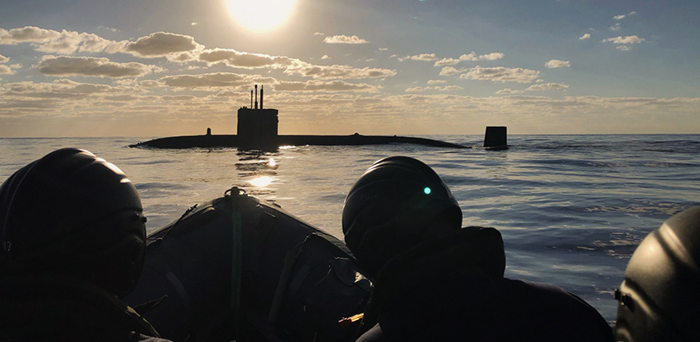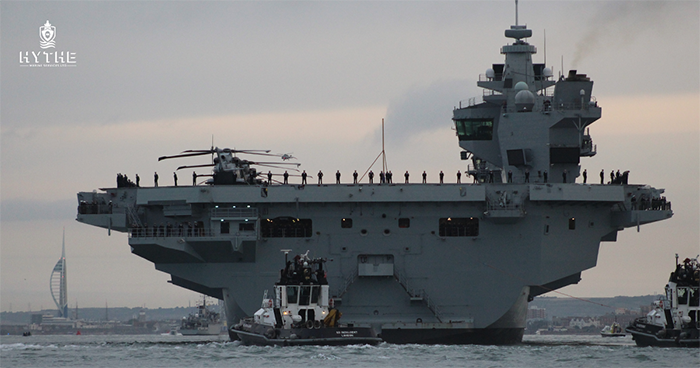An insight into the world of Structural Design
As well as in-house services, Hythe Marine also provides contracted talent to external large scale projects. Currently, a Hythe Marine Services (HMS) contracted Designer is working on a submarine design project over in Barrow-on-Furness with BAE Systems. We spoke with them to find out a bit more about what this involves.
How does the contracting process work at Hythe Marine?
Within BAE Systems, Hythe Designers work on machinery seating as well as checking models and output drawings. These checks involve special expertise in order to feedback improvements or necessary re-works to the other Designers.
Alongside these tasks, this particular engineer provides services such as testing Foran (the CAD package) and providing CAD support to the Designers. CAD stands for computer-aided design, and in the case of BAE Systems will contribute to the production of precise and easily-modifiable designs.
“I first used Foran around 10 years ago, so I have a good working knowledge of the package. Already knowing my way around Foran also led to me being involved with the publishing side of things which sends the model data into the database.”
Completing an apprenticeship as a Structural Designer on the Trident project at Barrow meant this Hythe Designer had useful previous experience of working on submarines. Also, their knowledge of the Foran CAD package and how BAE use it means they are able to assist with ‘best practice’ processes.
The life of a shipbuilding Structural Designer
Being a Structural Designer covers a range of roles. Potential activities include creating the main structural elements such as the hull, decks and bulkheads, to the secondary structure like machinery seating, ladders and walkways. These jobs require expert knowledge and experience to provide the best design to complete the manufacture within a given timescale.
A BAE Designer may create designs from data provided by engineers, who do shock/stress calculations to the size and thicknesses of a plate. For smaller seats, designers will do all the design work themselves.
Part of this Structural Designers role is also as a design checker, which involves quality-assuring other Designers work to ensure it conforms to specification.
An average day at BAE Systems
After an hour-long commute to BAE in Barrow, then begins the exciting day of troubleshooting and completing any tasks that arise. Other Designers will come to Hythe’s Structural Designer with various problems, such as with the CAD package or questions about the job and specifications. Often finding themselves doing several jobs at one time, it’s impossible to know what to expect from each day to the next. This way of working requires the ability to prioritise and multitask. Alongside all of that, they are also attending workshops and meetings regarding the software and processes.
A hectic day may not sound ideal to everyone, but this Structural Designer assured us, “My average day at work probably looks chaotic to some people because, unlike the other designers, I’m not really given specific tasks. I actually like this way of working because I’m always doing something different.”
Not just ships and submarines
When asked about past projects this Structural Designer found particularly interesting, they responded: “Possibly my most enjoyable contract was on a yacht called Mirabella V.”
Mirabella V is a luxury superyacht with a 300 foot GRP hull. Within this project, this Structural Designer’s role was to accurately model surfaces to produce the moulds for things like the rudder, boom and even the Jacuzzi! This yacht also held a motorboat, for getting to and from shore, within its hull. “I had to model the motorboat to make sure it fit in the space provided.”
Also within the Mirabella V project, this Structural Designer designed the shape of the radar arch for the yacht. One benefit of this project is the ability to see their work and be proud of what they created. They told us, “On most contracts, you don’t really see your work in the finished product because it’s usually not visible from outside, in the case of Mirabella V, I can look at the yacht and see the work I did.”
In addition to ships, submarines and superyachts, this Structural Designer has also worked within the Aerospace industry. A common trend amongst all industries is quality-assurance and checking.
When asked about how this role relates to their current role with Hythe Marine they said that checking within Aerospace requires certification as a checker on specific aircraft, whereas checking in his current industry is more down to experience, “However, checking in both sectors does require a good attention to detail and the ability to stand your ground when others might not agree with you.”
Being part of the Hythe Marine Team
Working for Hythe Marine on and off for over 20 years has allowed this Designer to see the company’s progression and development. From being a Mathon Engineering employee in 1998, they saw Mathon become Avrotech Design, which later became part of Hythe Marine Services. Reminiscing about their history with Hythe Marine, they told us, “I actually visited Hythe Marine with Avrotech when they first looked at getting involved, so I’ve seen Hythe grow into the great company it is today.”
As somebody who knows the ins and outs of Hythe Marine, it was great to get some insight into what makes them different from the rest.
“In my experience, Hythe Marine stands out because it always offers top quality personnel. From a design point of view, gathering personnel is done mostly by referral rather than advertising so the client always knows they will get good quality people. Hythe tend to offer the same team for each project so for a lot of contracts, the client already knows the core team they are getting.”

